Philips PML 9009 is the top LCD television from the manufacturer, featuring Mini LED backlighting. The device itself boasts excellent build quality, a stylish remote, and the manufacturer's exclusive multicolour Ambilight backlighting. In terms of picture quality, one could note a slight downside regarding black levels and contrast, which, to be honest, are not among the best and do not deliver as deep and vivid an image as seen in televisions from similar price ranges. However, it is worth mentioning that thanks to good algorithms responsible for the picture, its tonal quality was quite satisfactory. Therefore, the relatively low brightness of the display is well masked here and, with the implementation of Dolby Vision technology, allows access to the world of HDR content. What definitely deserves attention is the fluidity of transitions, which were truly outstanding and better than in some significantly more expensive units. The greatest advantage of this television is its performance in gaming. One cannot say a bad word about this aspect as the television truly shines here and will surely satisfy every user. The motion smoothing system is also one of those things for which the television deserves praise. With two sliders, the effect of which is noticeable at each position, every user can find the best degree of smoothness for themselves. Therefore, it can be confidently stated that when choosing a television for sports, one can point to PML9009 Philips as an excellent candidate. Although the TitanOS operating system is currently in the development phase and lacks a significant number of applications, we do not believe that the manufacturer will do nothing in this regard.
- Matching (Score)
- Our verdict
- TV appearance
- Where to buy
- Contrast and black detail
- HDR effect quality
- Factory color reproduction
- Color reproduction after calibration
- Smoothness of tonal transitions
- Image scaling and smoothness of tonal transitions
- Blur and motion smoothness
- Console compatibility and gaming features
- Input lag
- Compatibility with PC
- Viewing angles
- TV efficiency during daytime
- Details about the matrix
- TV features
- Apps
- Playing files from USB
- Sound
Philips PML9009 / 9019 / 9059 vs LG OLED G5
Direct compare
The Xtra / PML9019 / PML9059 / PML9009 / PML9049 / AMBILIGHT TV
G54 / G51 / G55 / LW / LS

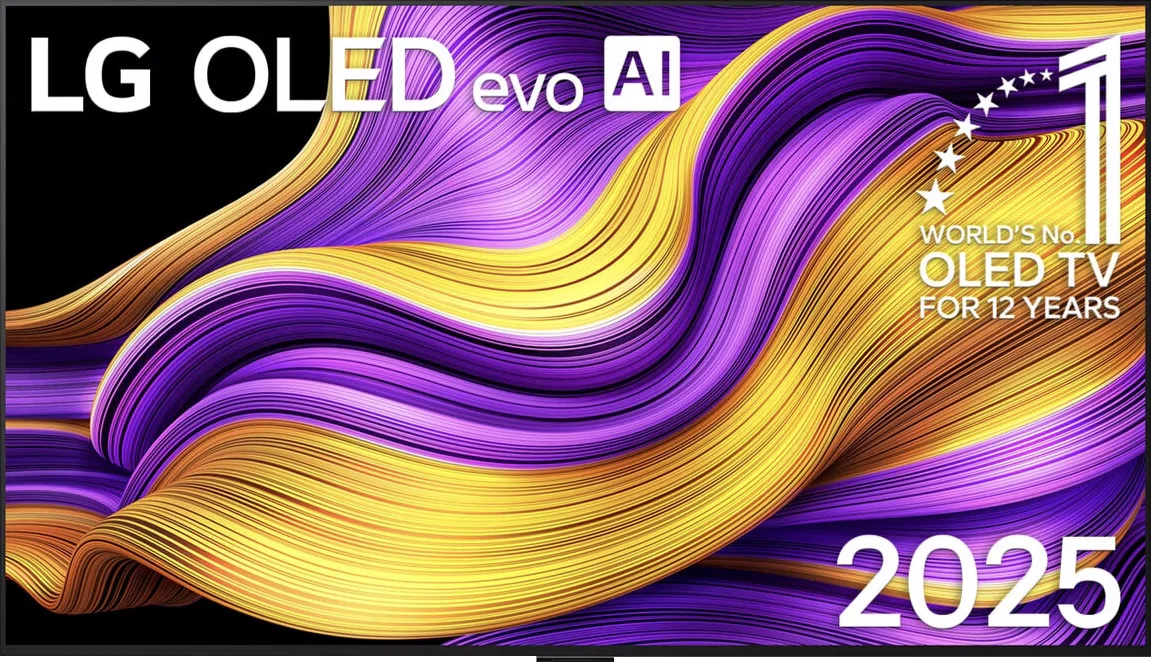
Panel type: LCD VA
Resolution: 3840x2160
System: Titan OS
Model year: 2024
Complete the survey to find out the result

Panel type: WRGB OLED
Resolution: 3840x2160
System: WebOS
Model year: 2025
Complete the survey to find out the result

Overall rating
6.8
8.9
Movies and series in UHD quality
6.5
9.2
Classic TV, YouTube
6.3
9.2
Sports broadcasts (TV and apps)
6.6
9.0
Gaming on console
8.5
9.6
TV as a computer monitor
8.6
8.8
Watching in bright light
6.1
8.0
Utility functions
6.0
8.5
Apps
6.2
8.7
Sound quality
6.7
8.7
Complete the survey to find out what fits your preferences
Advantages
Very good tonal quality of scenes exceeding the capabilities of the television
Well-functioning dynamic tone mapping feature
Colour reproduction after calibration
Functionality after connecting to console/PC
Amazing black and contrast
Reference colour reproduction after calibration
Very high brightness in HDR content
Excellent compatibility with consoles and computers
Great motion smoothness - OLED panel 165Hz
Many features for gamers: VRR, ALLM, HGIG, low input lag
Great WebOS operating system with many applications
Superb control with the Magic remote featuring a "cursor" function
Disadvantages
Significant halo/bloom effect
Poor viewing angles
The TitanOs system is not as developed as the competition
Average contrast and black levels
No support for DTS audio format
Inferior (though still good) viewing angles compared to the predecessor G4
Different remote versions in derivative models – hard to predict which version we will get
Our verdict
LG G5 is a television that not only continues but also expands on what we loved about the previous models in the G series. Instead of following the conventional path, LG opted for a new Tandem OLED panel – and it hit the mark. Picture brightness? Simply, F E N O M E N A L. HDR effect? Close to reference. Colours after calibration? Nearly perfect. Motion smoothness, low latency, and features for gamers? At absolutely top-notch level. The G5 performs well in both movies and games, day and night, with a decoder, console, PC, or even just the remote. Of course – it’s not a product without flaws. It's a shame there’s no support for DTS, viewing angles have worsened compared to its predecessor, and the remote may vary depending on the version. But when we look at the overall picture, it's hard not to get the impression that this is one of the best OLED televisions available on the market, and perhaps even the best. Definitely, when it comes to its versatility and picture quality without the need to resort to extremely expensive models from competitors. If you're looking for a television for everything – for cinema, gaming, a bright lounge, streaming internet content, or connecting a computer – the LG G5 is gear that simply delivers on every front without compromise.
TV appearance




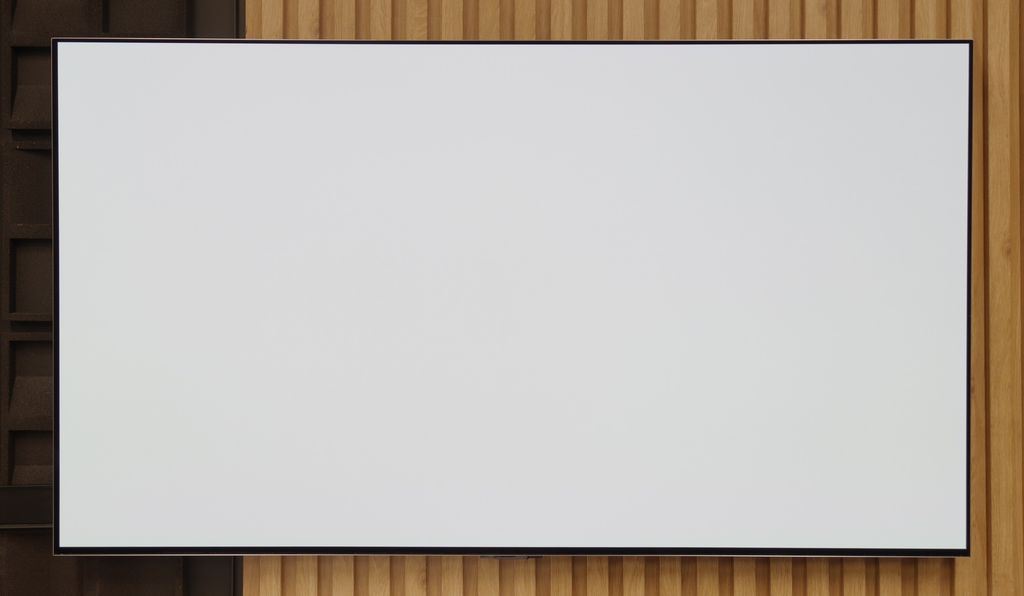
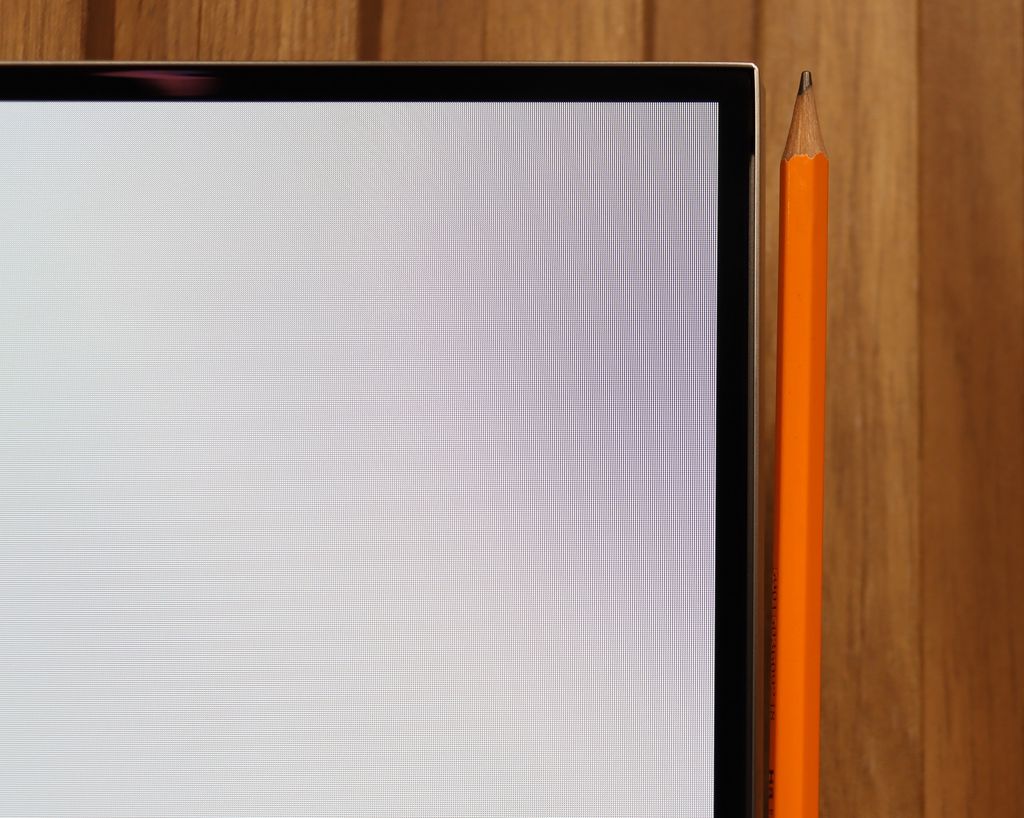
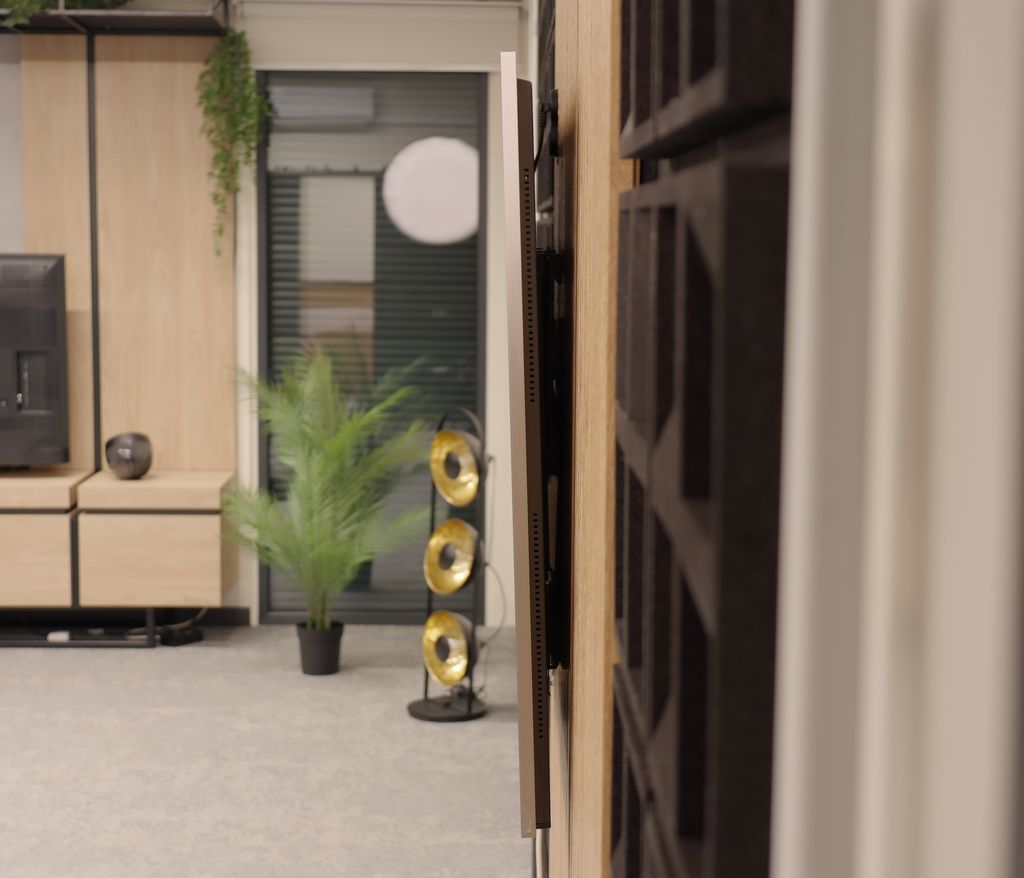
Contrast and black detail
6.6/10
10/10
Local dimming function: Yes, number of zones: 75 (15 x 5)
Contrast:

Result
132,000:1

Result
16,550:1

Result
14,450:1

Result
7,850:1

Result
6,650:1

Result
∞:1

Result
∞:1

Result
∞:1

Result
∞:1

Result
∞:1
Halo effect and black detail visibility:

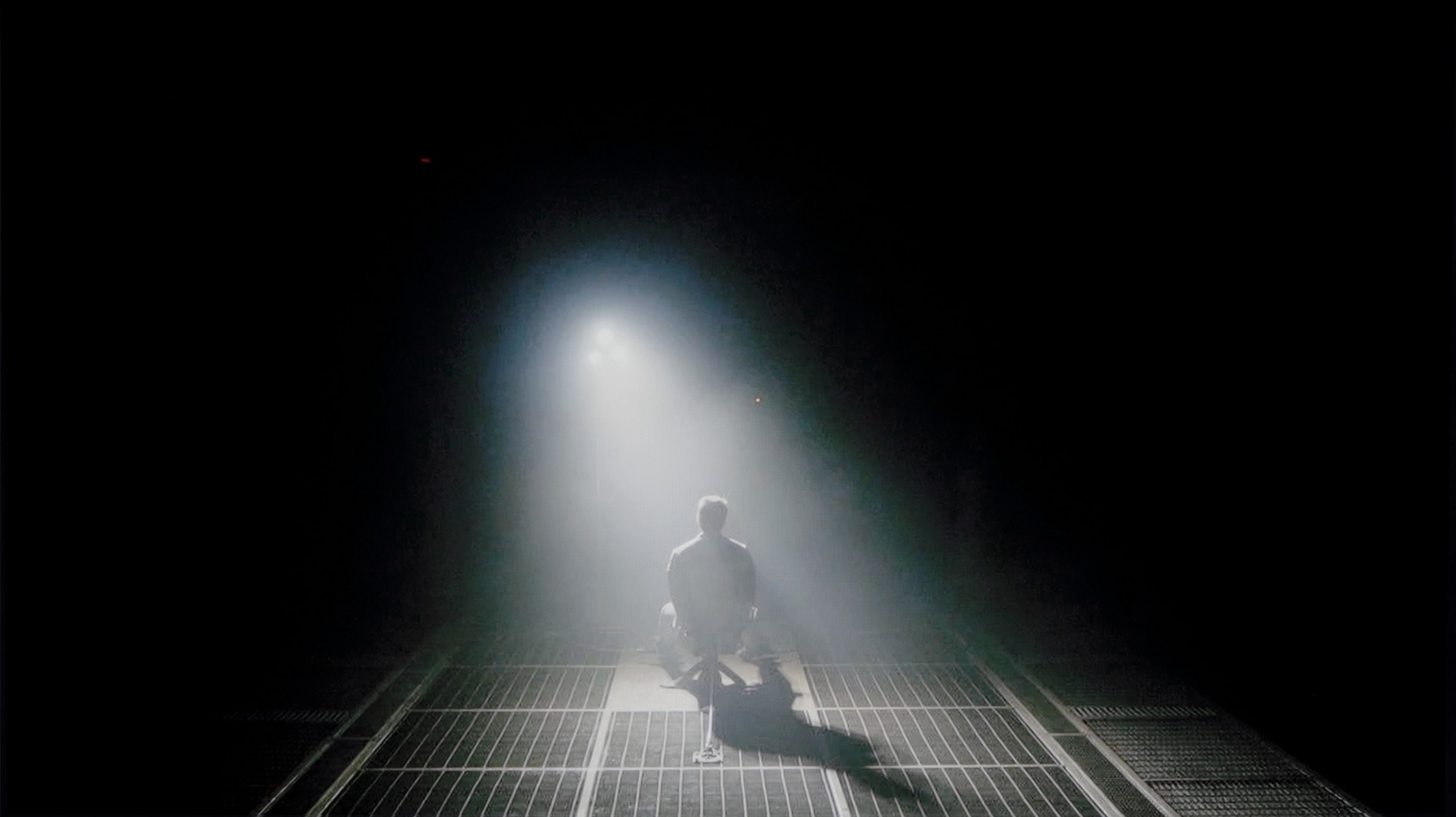
Philips PML9009 is equipped with a high-contrast VA panel. While it doesn’t deliver as deep and vivid an image as OLED televisions, it is still a much better solution for home cinema compared to IPS/ADS panels. The measured static contrast (without local dimming activated) of 6000:1 is considered very good and allows the Mini LED backlighting implemented in the tested television to shine. The results of the contrast and black measurement, as you can see for yourself, are not among the highest, and the only scene where the television exhibited satisfactory results was from the movie "Oblivion," where the unit deserves praise for its light separation, which is not such an obvious thing even in much more expensive models. We should also add that all tests were conducted at medium dimming power, as the lowest option provided unsatisfactory black levels, while the highest one lost significant detail. Unfortunately, our standard testing procedure with the film "Sicario 2" did not go as well as hoped. Yes, all the details in the second and third planes are very visible, but due to the operation of local dimming, the overall tonal balance was severely disrupted, not to mention the strong halo effect around the bright elements of the helicopter.
LG G5, as expected from an OLED television, impresses with its contrast and black levels. In scenes with a lot of dark areas, the screen presents itself almost perfectly, offering deep, absolute black and infinite contrast – an effect that still cannot be achieved on any LCD television. The new Tandem OLED matrix does not introduce any negative changes compared to previous generations – blacks are perfect regardless of the content. Watching scenes from movies like The Revenant or Oblivion, the excellent separation of lights is clearly visible, without blooming or lightening of dark parts. In this category, LG G5 deserves the highest rating.
HDR effect quality
6.1/10
9.1/10
Luminance measurements in HDR:

Result
548 nit

Result
550 nit

Result
824 nit

Result
491 nit

Result
582 nit

Result
2346 nit

Result
2353 nit

Result
2399 nit

Result
2353 nit

Result
2012 nit
Scene from the movie “Pan” (about 2800 nits)


Scene from the movie “Billy Lynn” (about 1100 nits)


Static HDR10


Dynamic: Dolby Vision
Dynamic: Dolby Vision


HDR luminance chart:
LG OLED G5
Luminancja HDR
Luminance of RGB colors
Philips PML9009 / 9019 / 9059
Luminancja HDR
Luminance of RGB colors
Philips PML9009 doesn't really operate at the highest values in HDR materials. Most effects with brightness around 550 nits won't leave us thrilled with the lighting effects, although they are quite stable, which is a plus, and a considerable difference can be felt between SDR materials. It's worth noting that we can achieve a good result only in one scenario, that is in the film "Gemini," where the flashlight as the sole light source can really shine. Why in this scene? The answer is quite simple. The scene itself doesn't have a large amount of black, and the flashlight isn't as large an object as the sun in the first and last scenes. Overall, the brightness measurement results in HDR materials aren't a solid basis for recommending this television for viewing productions that use a wide color gamut. However, it's worth mentioning that this model can cover it in a not too bad 93% degree in the case of the DCI-P3 palette.
LG G5 with its new Tandem OLED panel brings the biggest change in terms of TV brightness. And it’s substantial. This is a truly astronomically bright OLED. In every scene tested – whether it's point lights or full-screen whites from the movie The Meg – brightness on the G5 exceeded 2000 nits. Just a year ago, such values on an OLED were simply unimaginable. And here we are – the G5 is approaching, and at times even surpassing, the best Mini-LEDs on the market. A novelty in the Tandem OLED panel is also the expanded colour gamut coverage – and here the LG G5 performs almost perfectly. DCI-P3 achieves a full 100%, while BT.2020 hovers around 83%. These are some of the highest values currently available on the market – it's hard to find any other TV that comes close to such results, unless we're talking about the best displays with QD-OLED panels. The G5 has almost reference-level HDR quality – both in terms of brightness and colour saturation. This is an OLED that can truly shine – and not just metaphorically.
Factory color reproduction
5.3/10
7.8/10


Factory Mode
After calibration


Factory Mode
After calibration
The best factory mode used during our tests was "Filmmaker". Here, we will examine both SDR and HDR content. The key differentiator is primarily the EOTF curve in the wide colour gamut materials and gamma in those recorded "the old way". Starting with SDR films and series and the most basic thing we can observe, which is white balance, we see a significant red colour dominance. This led to a yellow tint across the whole image, causing unnaturally looking faces and yellowed whites. This issue is also clearly visible on the "ColourChecker" palette, where all colours have shifted towards their warmer counterparts. Looking at an even more significant graph, the gamma responsible for the contrast of the image, we see considerable errors beginning right from the start. From the left, the value we measured, indicated by a combined ellipsis, clearly spiked upwards, causing complete merging of details in the darkest scenes. This state of affairs persisted up to 10% brightness on the screen, after which it dove below the reference orange line, leading to a deterioration in contrast, which, as we know, Philips PML9009 is already lacking. In HDR materials, white balance issues were very similar to those in SDR content. The discrepancy appears when checking the EOTF curve, which governs the rate of brightness increase and severely limited it, resulting in an unnaturally dark image. As for the colours themselves, there were more reasons for concern here, as the television's low luminance caused a huge disparity between the actual state and the correct one, which is perfectly visible on the error graph, often exceeding the scale.
Our test unit LG G5 had some issues in the factory Filmmaker mode. While the picture might have seemed fine to most people, we knew this TV could do much more. This mode had a noticeable excess of blue tint in the white balance, resulting in a strongly cooled image – especially in HDR modes, where there was additionally a lack of red. The image appeared cold, and its sharpness was artificially boosted and unnatural. Another significant problem was the brightness characteristics. In SDR content, the situation wasn't the worst, aside from a slight dimming of the entire image. However, it fared much worse in HDR materials – due to improper brightness management, the smallest details could completely disappear from the image, while larger, bright elements looked overexposed and lacking in gradation. Fortunately, the G5 supports calibration using 3D LUT (a professional tool for colour calibration), so we decided to take advantage of its professional capabilities and see what it was really capable of. Because while it wasn't terrible even before calibration, the potential of this TV definitely deserved more.
Color reproduction after calibration
7.5/10
9.8/10




Philips PML9009, like most leading manufacturers, has been providing advanced tools for calibration processes for years. Here we find 2-point and 20-point greyscale adjustments, as well as an advanced CMS (Color Management System). The differences resulting from calibration are evident, and even someone who doesn't pay attention to image quality (although there probably aren't many like that here) will notice the positive difference. Both SDR and HDR materials have undergone quite a transformation. The former and the latter have primarily shed the ugly yellow tint resulting from the red colour dominance in white balance. As for the SDR materials and gamma, although it is not perfectly modelled and still loses dark details, the rest of it is at more than a decent level, and minor errors will not be noticeable. The colours themselves look far better, and with low deltaE errors, they are almost reference-quality. On the other hand, HDR materials, due to the unit's low luminance, have not been optimised as we would have liked. Although the white balance has been largely normalised, a slight blue tint can still be observed here and there. Fortunately, the EOTF curve turned out to be much more accessible, allowing for practically perfect geometry. Unfortunately, due to the screen's too low brightness, the colour errors remain quite high.
After completing the calibration process with professional tools, we can confidently state this – the LG G5 offers almost reference-quality image. Most of the errors related to white balance and the ColorChecker test are below a value of 2, which is a phenomenal result, practically imperceptible to the human eye. And while one could still nitpick that in HDR films the TV still has a tendency to slightly dim the smallest elements of the image, in practice this does not negatively affect the overall reception. Hats off to LG, as once again they provide users with enormous display settings options – and this, combined with very good parameters of the panel itself, results in an image that is truly hard to beat.
Smoothness of tonal transitions
7/10
8.5/10












There’s no doubt many of you have watched a movie or series where you noticed transitions that should be a smooth blend between colours. That’s why during our tests we also pay attention to tonal transitions. Philips PML9009 performed quite well in this area with each of the scenes we prepared, and while there are certain elements here and there that could have been processed better, it’s still good overall. It’s particularly worth noting the scene from "The Green Knight," which is definitely the most challenging. For the tested television, it wasn’t a "killer" and there are no significant unwanted stutters visible in it.
The fluidity of tonal transitions in the LG G5 is a clear step forward compared to last year's model. Not only has brightness improved, but also the way colours blend, which the G4 sometimes struggled with. In the vast majority of scenes, the G5 has no issues with tonal transitions – there’s no typical banding associated with WOLED technology nor any ugly breaks between colours. Of course, in very dark areas of the image and with shades of grey, small imperfections can still be noticed, but these are things that the average viewer wouldn't even register. In short – it's really good.
Image scaling and smoothness of tonal transitions
7.2/10
8.7/10
Smooth transition function

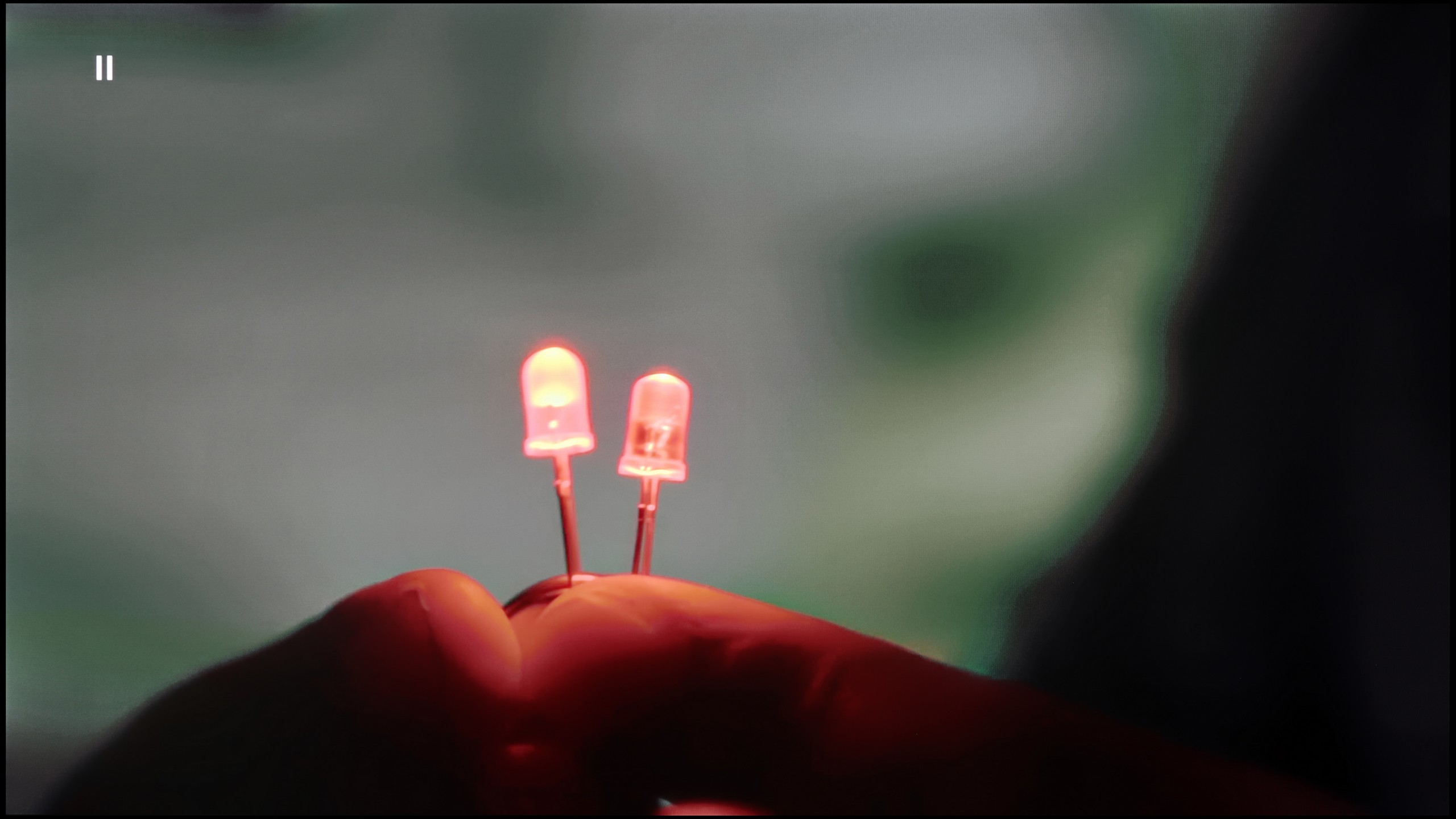
Image without overscan on the SD signal


Judging by how PML9009 Philips handled tonal transitions, the image scaling test should perform just as well. This time, we are checking the TV’s algorithms responsible for enhancing the quality of images that were recorded in lower quality. Such images can be found, for example, in various TV shows or older films. In this regard, Philips PML9009 performs quite mediocrely and drastically blurs the image. This is particularly noticeable on fine branches or the model's hair.
Let’s revisit the issue of tonal transitions, which performed remarkably well. Within the unit, we will find several levels of smoothing. Even the lowest one can effectively eliminate any jerky tonal transitions and will be suitable for the vast majority of materials. More importantly, none of the settings for this function soften the effect of film grain, which is extremely important in terms of alignment with the director's vision. However, we would like to point out that sometimes it may turn out that fine details are blurred.
Upscaling and digital image processing in the LG G5 performs very well. The television handles lower quality content excellently, especially when the "Smooth Gradation" feature is set to a low level. In this mode, it effectively removes undesirable artifacts and issues with visible tonal transitions. It may also slightly smooth out some desirable details, like the subtle texture of clothing or skin, but importantly – it does not remove film grain, so it's hard to talk about a serious compromise here. This is one of those options that is actually worth turning on.
The G5 also does well with upscaling, which is improving the quality of older materials. The test image with the model looked really solid – slight jaggedness was visible, but that's an effect that can't be completely avoided. On the plus side, there were no overscan issues, which – contrary to appearances – is not obvious, even in 2025.
Blur and motion smoothness
7.7/10
9/10

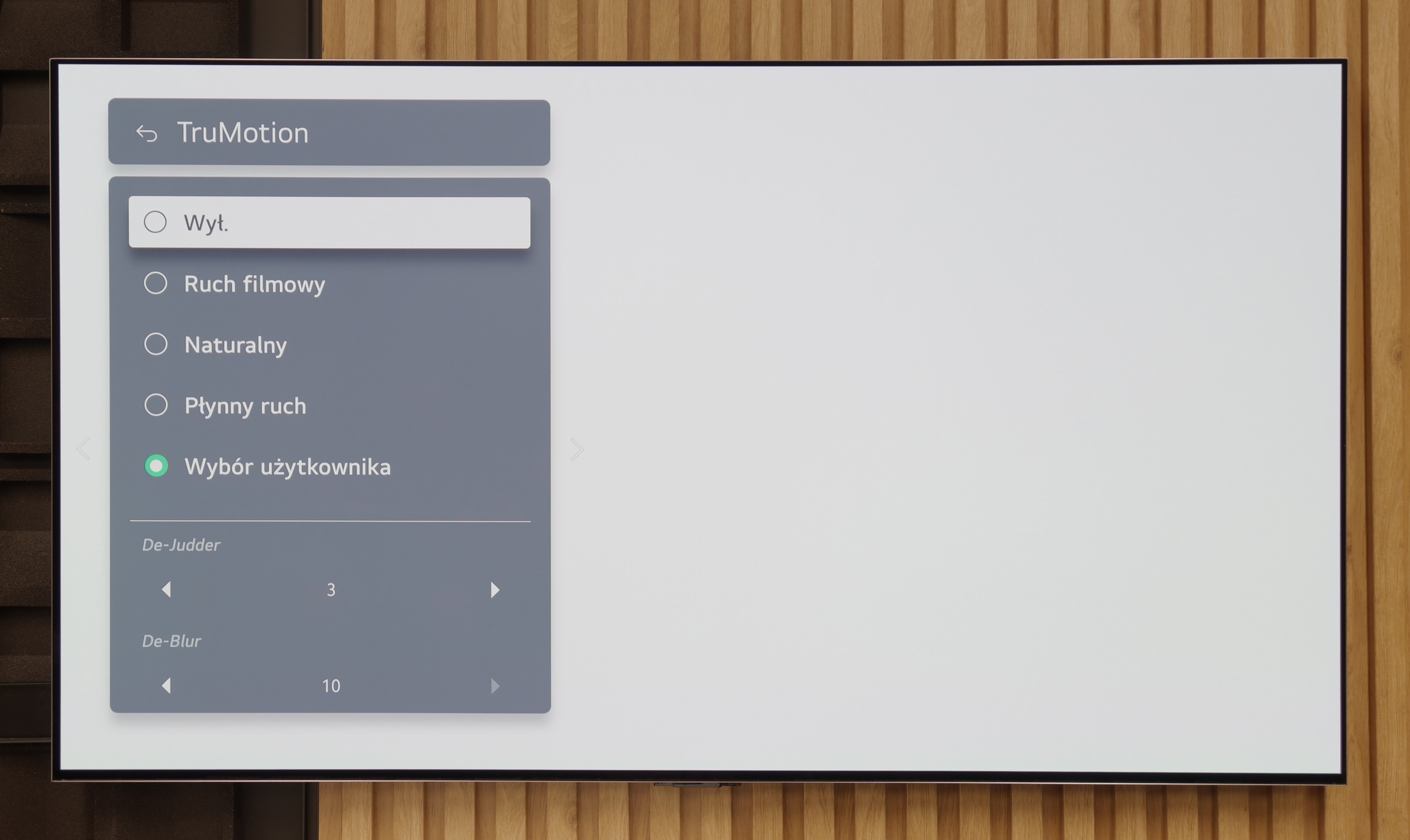
Blur (native resolution, maximum refresh rate):






Blur (BFI function enabled):
Image flickers in this mode



Smużenie ():
Smużenie (4K 165Hz):



Philips PML9009 has been equipped with a panel that has a native refresh rate of 120 Hz. This is the essential minimum for watching all kinds of sports and is recommended for comfortable gaming in favourite titles on consoles or PCs. The manufacturer, for those who dislike the characteristic judder of footage recorded at 24 fps or those requiring a high degree of motion smoothness, such as when watching football matches, has prepared an effective system for improving the sharpness of moving images. In the dedicated tab, we will find a "Smoothness" slider responsible for eliminating judder and a "Motion Blur Reduction" setting that helps to increase the sharpness of dynamic elements. The function works very well and granularly, meaning each setting has a real impact on motion perception. With such a set, every user will find their sweet spot. In the picture, we present our choice, which is slight smoothing without the soap opera effect.
A matter directly related to motion is the response time of the pixels in the panel itself. The best in this regard are of course OLED panels, followed by units based on IPS and ADS screens, and lastly VA. Despite the generally good quality of the systems responsible for smoothening the image, the use of a VA panel carries consequences in the form of black smear behind fast-moving objects. Although in the tested television this should not occur frequently, it will be noticeable here and there.
The motion smoothness on the LG G5 is simply phenomenal. The television is equipped with a panel featuring a 165 Hz refresh rate, and this combined with the instantaneous response time of the OLED matrix delivers incredible results. The image doesn’t judder or blur like on traditional LCD televisions. Like most LG models, the G5 comes with a motion smoother, which can be handy when watching movies – we’re talking about the TruMotion mode, of course. With the “De-Blur” and “De-Judder” sliders, we can adjust the smoothness of older materials according to our own preferences, whether we want to maintain the characteristic film jitter or lean towards a more fluid, television-like effect.
Console compatibility and gaming features
9.8/10
10/10
- ALLM
- VRR
- VRR range48 - 144Hz40 - 165Hz
- Dolby Vision Game Mode
- Correct implementation of HGIG
- 1080p@120Hz
- 1440p@120Hz
- 4K@120Hz
- Game bar

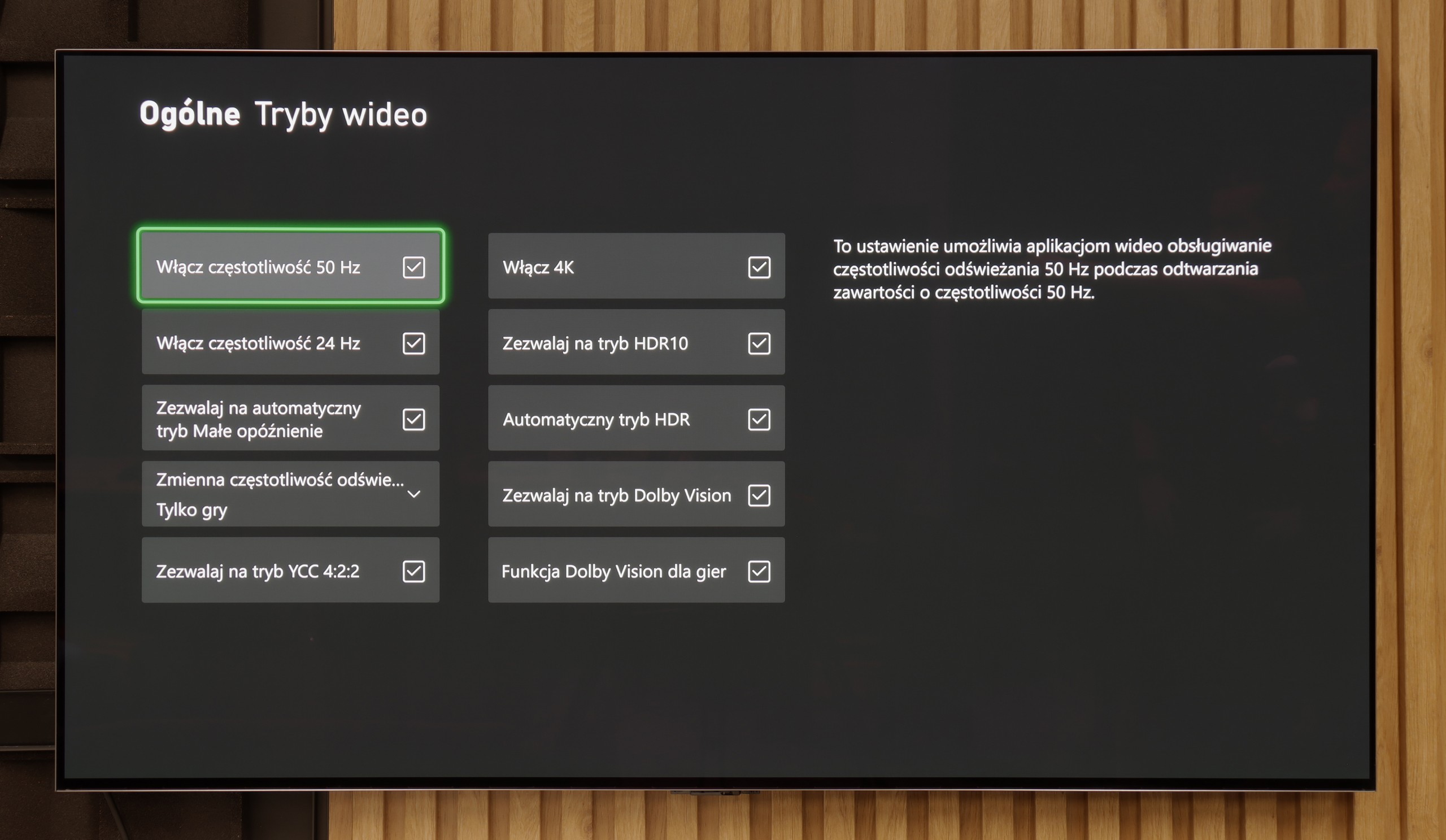

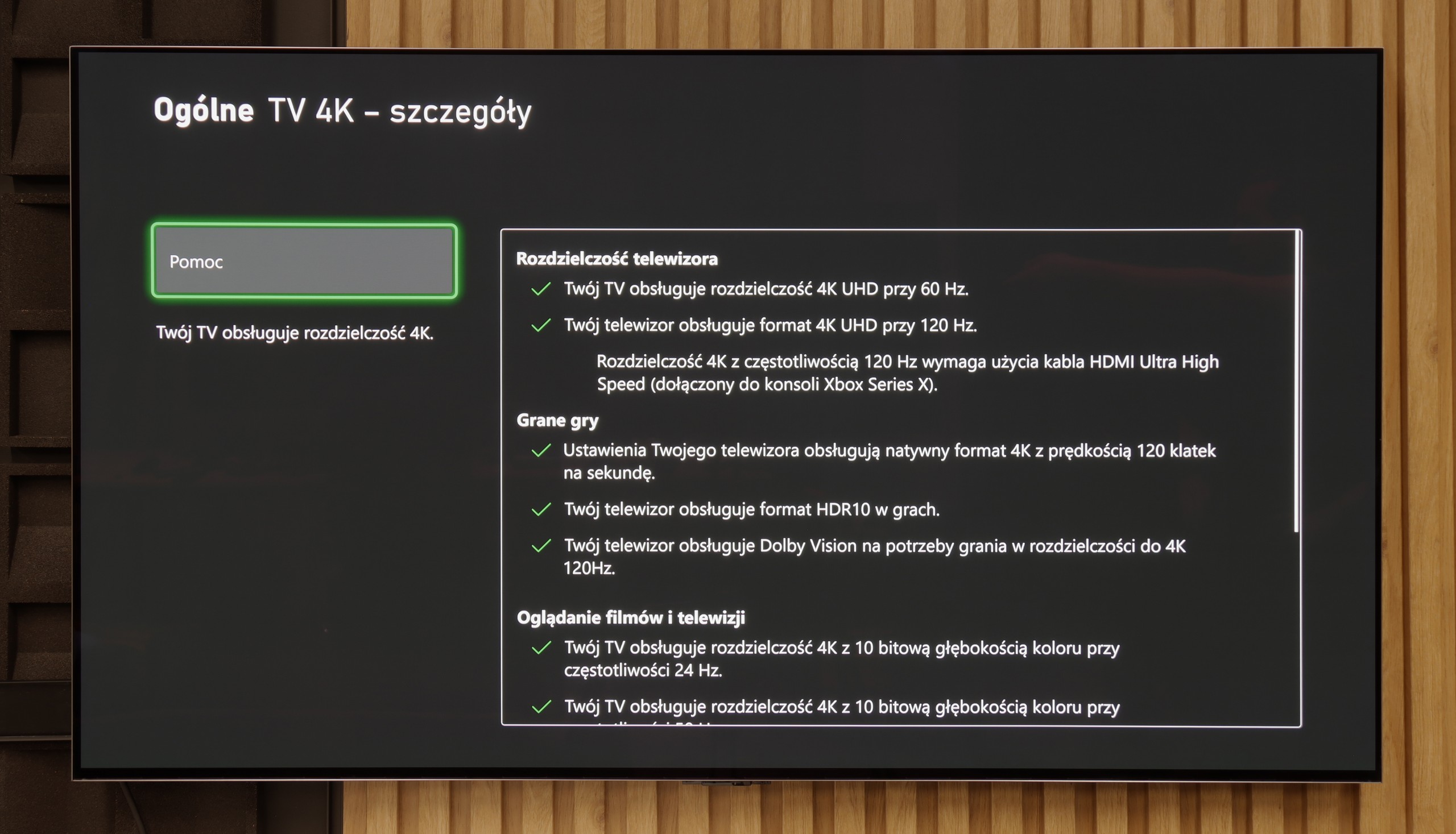

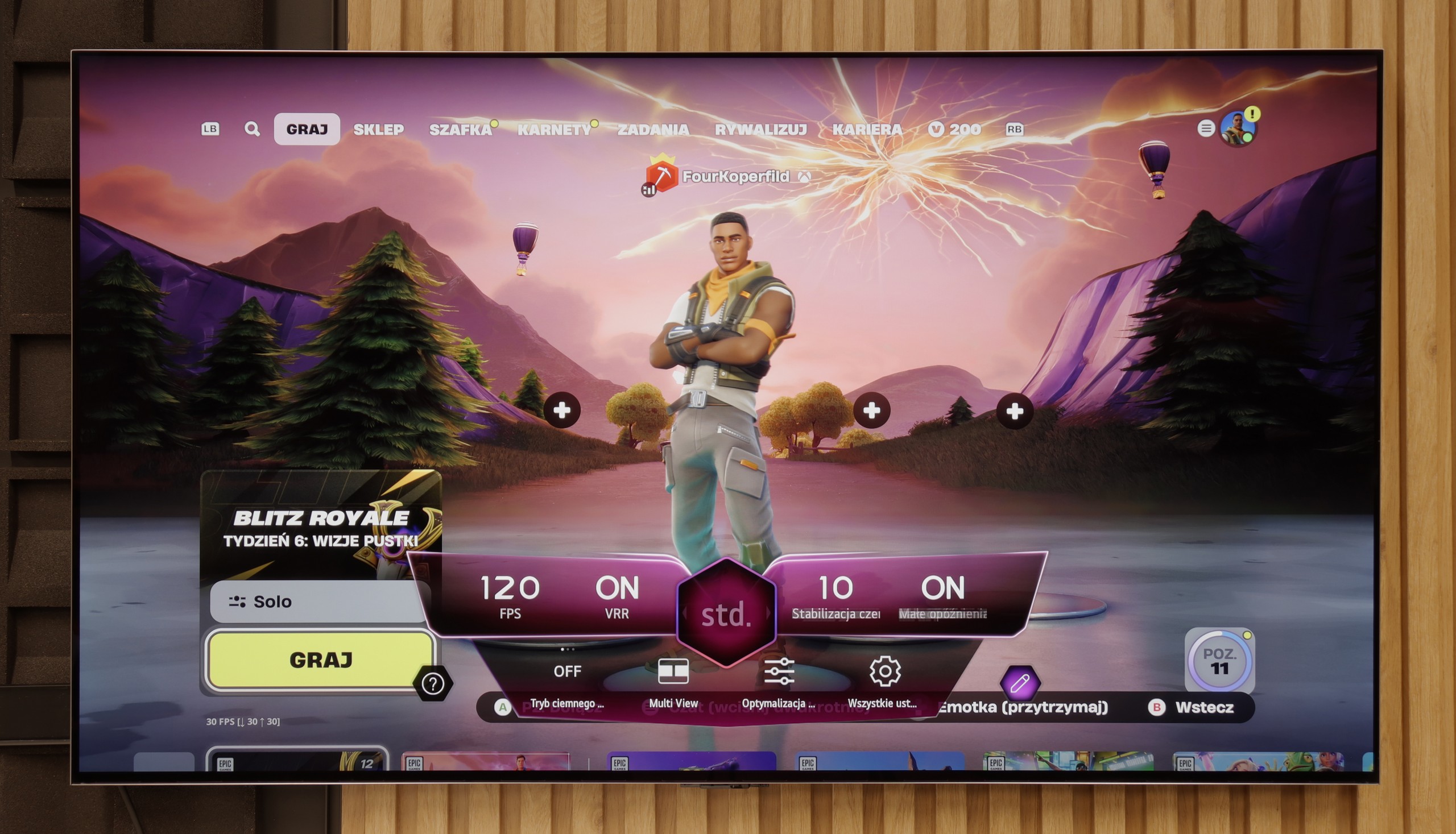

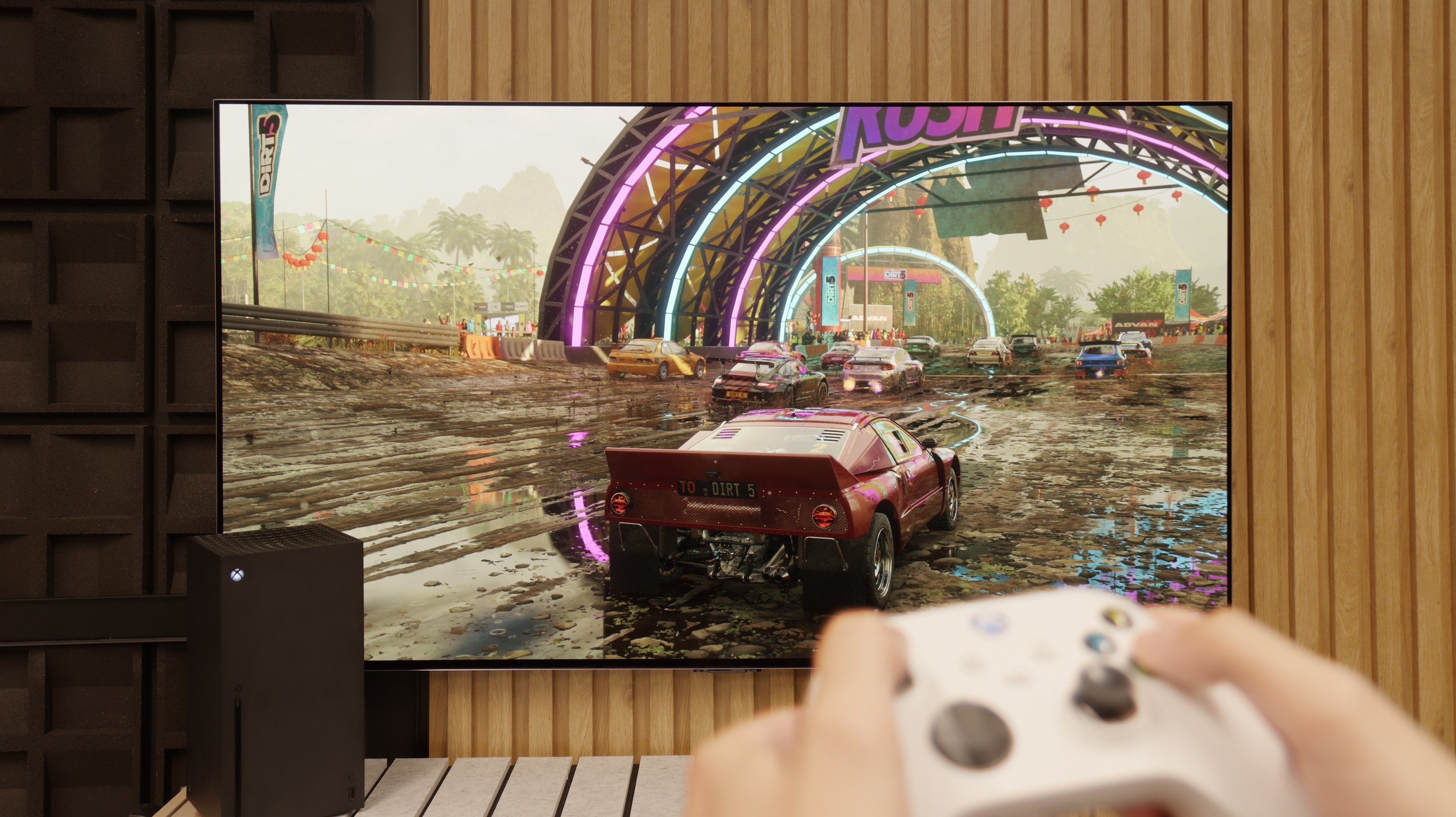
Philips PML9009, equipped with HDMI 2.1 connections with full bandwidth, supports all functions dedicated to gamers. The most basic ones, such as VRR and ALLM, are a given, but G-Sync, FreeSync, or playing in HDR Dolby Vision with low input lag are not. These features activate without any problems, and during the tests conducted, they presented no obstacles. Such preparation of the television is certainly its strong point, and it can be said that it is a unit dedicated to gamers. For more advanced users, we also mention that the PML9009 is equipped with the HGIG mode, which will be particularly felt by gamers, as there are still relatively few games that support Dolby Vision. This mode primarily allows for the adjustment of HDR effects to the capabilities of the television on a special board, to prevent dimming and burning of the image.
The television additionally implements a special menu - GameBar. This allows for editing unit settings "on the fly," meaning without having to exit the game. In it, we will also find functions such as activating a crosshair or black level correction for better visibility of opponents in shadows.
In a brief summary of this paragraph, the Philips PML9009 is a unit that will undoubtedly attract gamers' attention. Thanks to its versatility, it will allow for playing any title in the highest quality without compromises. Especially since features such as VRR, ALLM, G-Sync, FreeSync, or gameplay in HDR Dolby Vision will provide an even greater immersion in the favourite title.
Features for gamers? Perfect. That should be enough for you to know what level we’re dealing with here. The G5 is a TV designed for gamers, so you'll find literally everything you might expect from a gaming screen. There's Game Bar, support for high resolutions with high refresh rates - that is, 4K at 120 Hz, and even more, as the panel has a refresh rate of 165 Hz (which PC gamers will benefit from). The TV supports variable refresh rate (VRR), automatic low latency mode (ALLM), and also properly handles HDR in games thanks to the HGiG feature. All of this adds up to one of the best gaming feature sets available on the market. Well done, LG.
Input lag
9.6/10
9.9/10
SDR
HDR
Dolby Vision
The results of input lag measurements in Philips PML9009 are impressive, regardless of the signal or resolution. All gamers will certainly appreciate the efforts of the manufacturer, which have led to a game running at 4K120Hz with HDR having only 8 ms of delay, which is practically undetectable even in online games. One should also not forget about the proper implementation of game mode with Dolby Vision, which can be praised for a similar response time of 16 ms.
The input lag on the LG G5 is incredibly low. The response time to our actions – whether we're gaming with a controller, keyboard, or mouse – is nearly perfect. The controls are instantaneous, and the game reacts exactly when we expect it to. The Dolby Vision Gaming mode does introduce slightly higher latencies, but even then, it's hard to complain about anything – in the worst case, the values hover around 20 ms, which will still be virtually unnoticeable for most gamers.
Compatibility with PC
8.6/10
8.8/10

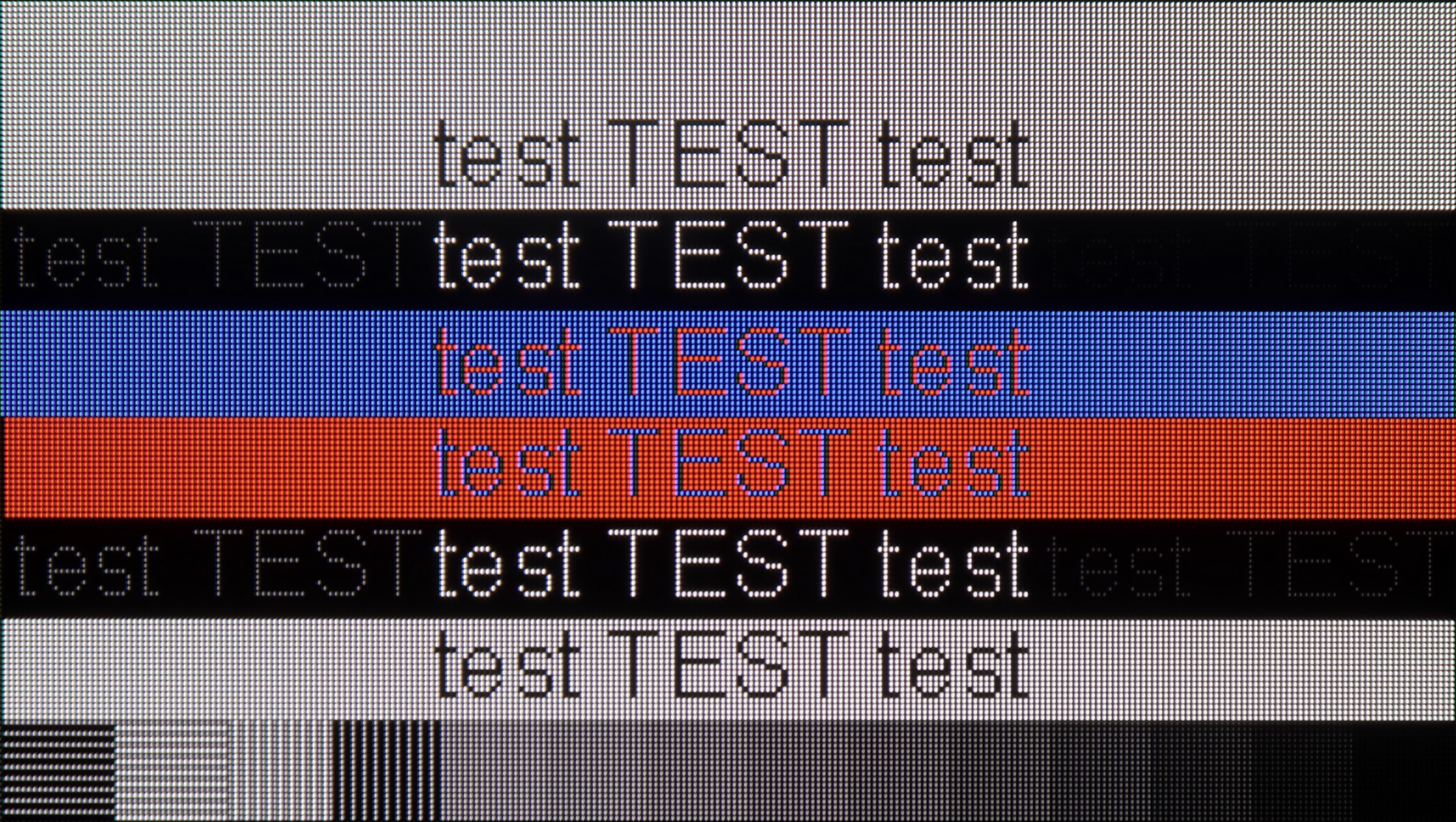
Just like in games, the tested Philips PML9009 performs excellently in everyday use as well. Measured latencies of 8 ms allow for virtually instantaneous response between the mouse, screen, and eye. The correct implementation of chroma 4:4:4 enables working with text without any problems thanks to sharp fonts. The subpixel arrangement of the matrix is BGR, although this does not cause any discomfort when working on the Windows system. It may be different with other systems that may not be able to correctly convert text.
Cooperation with a PC? Almost perfect. The television, as mentioned earlier, has great features for gamers – including those using a PC. Onboard, we find full G-Sync certification, a 165 Hz panel, and super-fast input lag at around 5 ms. Thanks to proper implementation of chroma 4:4:4, fonts are very readable – both the smallest and the largest. Although due to the WRGB subpixel layout, there may be slight shadows around the characters, for most users this effect will be practically unnoticeable. The G5 performs excellently as a screen for work, entertainment, and gaming – also from a computer.
Viewing angles
2.6/10
7.5/10
A commonly known drawback of VA panels that do not have an angle coating is their poor viewing angles. This time is no different. Even after a small shift off-axis, the image becomes washed out, and the colours undergo significant degradation.
The viewing angles on the LG G5 are very good, primarily due to the use of a WOLED panel. It's hard to find fault here – the picture doesn't significantly lose brightness or quality even when viewed from the side. However, it must be noted honestly that there has been some regression compared to the G4 model. The predecessor used an MLA panel with micro-lenses, which offered slightly better light distribution. Also, compared to QD-OLED panels, the angles are worse. Nevertheless, the overall viewing experience at an angle remains very good and shouldn't be an issue for everyday use.
TV efficiency during daytime
6.1/10
8/10

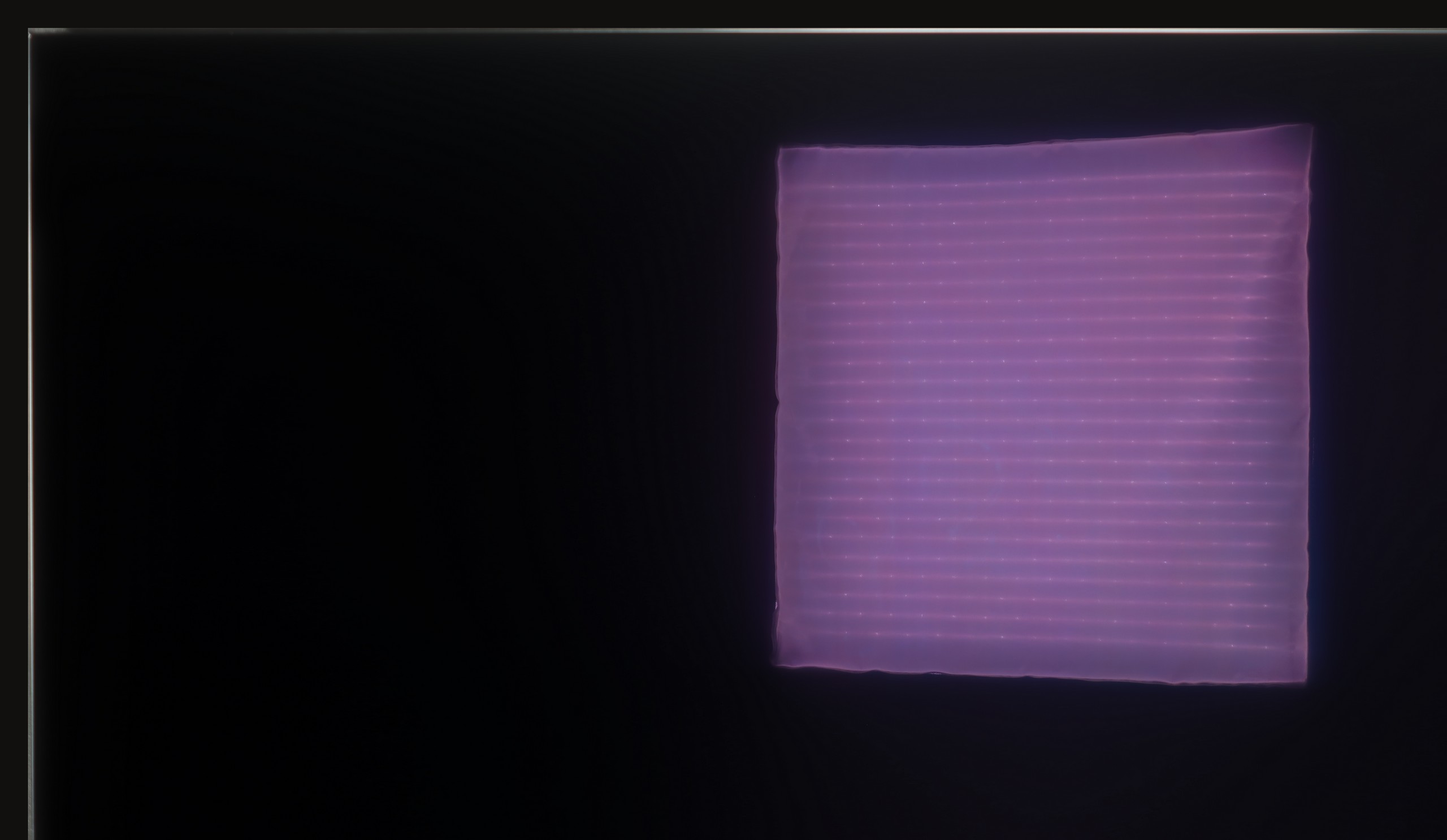


Matrix brightness
Average luminance SDR
LG OLED G5: 810 cd/m2
Philips PML9009 / 9019 / 9059: 564 cd/m2
As far as the brightness of the TV itself in SDR content is good (let's face it, we watch movies in the evening or in the dark), the reflection suppression is at a rather average level. This is due to the satin finish of the panel, which is quite susceptible to all light sources and neither absorbs nor disperses them. However, it's worth noting that due to the quite high brightness in SDR content, the TV will overall perform fairly well in bright rooms, and certainly better than a large portion of OLED TVs.
LG G5, with its very high brightness, performs excellently in bright rooms. Even with SDR content, the average brightness is around 800 nits, significantly more than standard televisions. It will handle a bright living room with ease. Although the panel moderately reduces reflections, it still maintains much better blacks and colours during the day than QD-OLED panels or those with a matte finish. The G5 will work effortlessly in very sunny rooms – unless you really can’t stand reflections on the screen. In that case, you’ll need to use blinds or consider purchasing a television with a matte panel.
Details about the matrix
Subpixel Structure:

Panel uniformity:


TV features
6/10
8.5/10
- HDMI inputs0 x HDMI 2.0, 4 x HDMI 2.1 48Gbps0 x HDMI 2.0, 4 x HDMI 2.1 48Gbps
- Other inputsIR (remote)
- OutputsToslink (Optical audio), eARC (HDMI), ARC (HDMI), Mini-Jack (Headphones)Toslink (Optical audio), eARC (HDMI), ARC (HDMI)
- Network InterfacesWi-Fi 2.4GHz, Wi-Fi 5GHz, Ethernet (LAN) 100MbpsWi-Fi 2.4GHz, Wi-Fi 5GHz, Ethernet (LAN) 100Mbps
- TV receptionDVB-T, DVB-T2, DVB-S, DVB-S2, DVB-CDVB-T, DVB-T2, DVB-S, DVB-S2, DVB-C
Classic features:
- Recording to USB (terrestrial TV)
- Recording programming
- Picture in Picture (PiP)
- RF remote control (no need to aim at the screen)
- Backlit remote control
- Teletext
- Audio only mode
- Possibility to connect Bluetooth headphones to the TV
- Possibility to simultaneously use Bluetooth headphones and the TV speaker
Smart features:
- AirPlay
- Screen mirroring (Windows Miracast)
- Wyszukiwanie głosowe
- Voice search in native language
- Ability to connect a keyboard and mouse



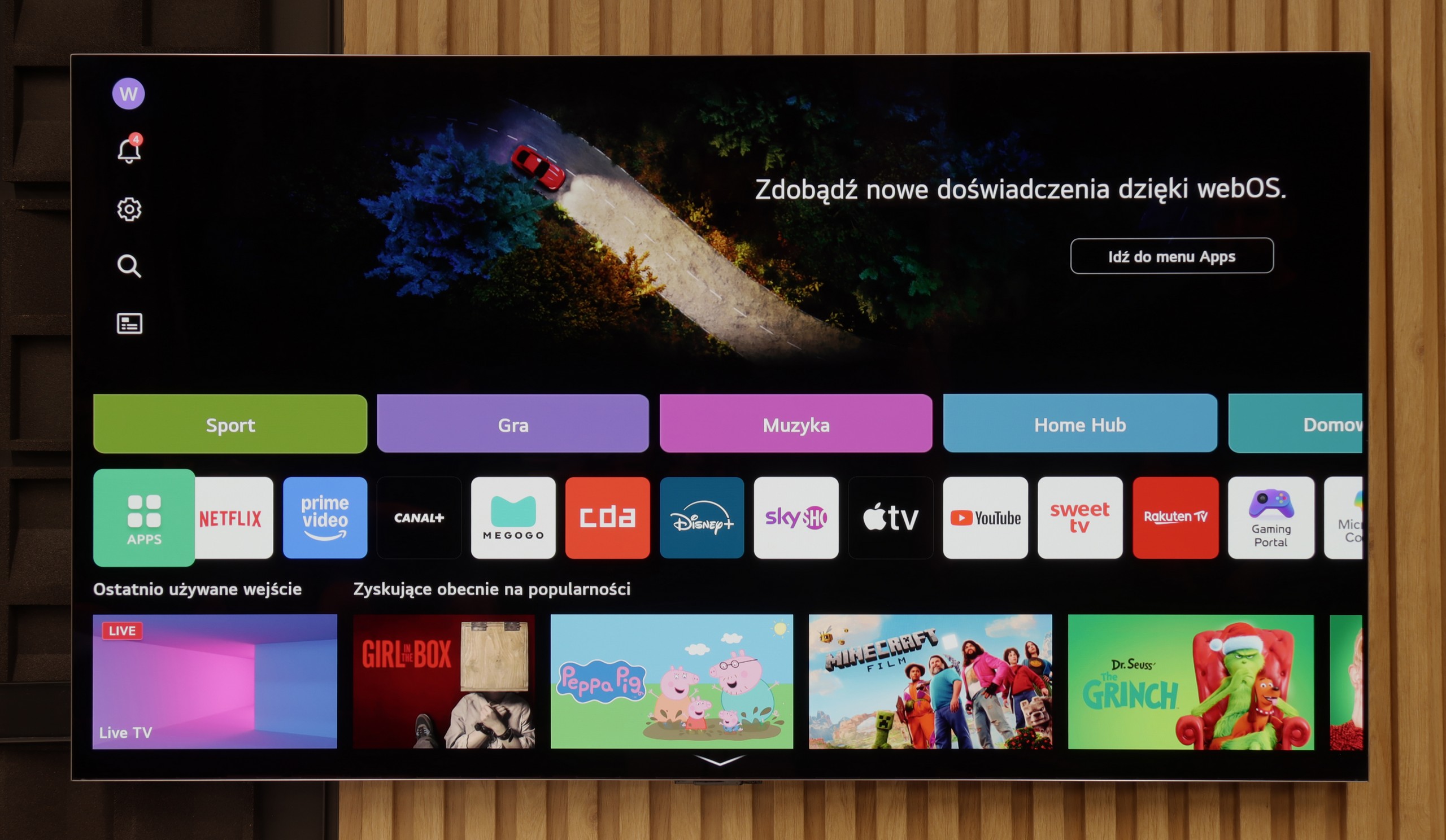
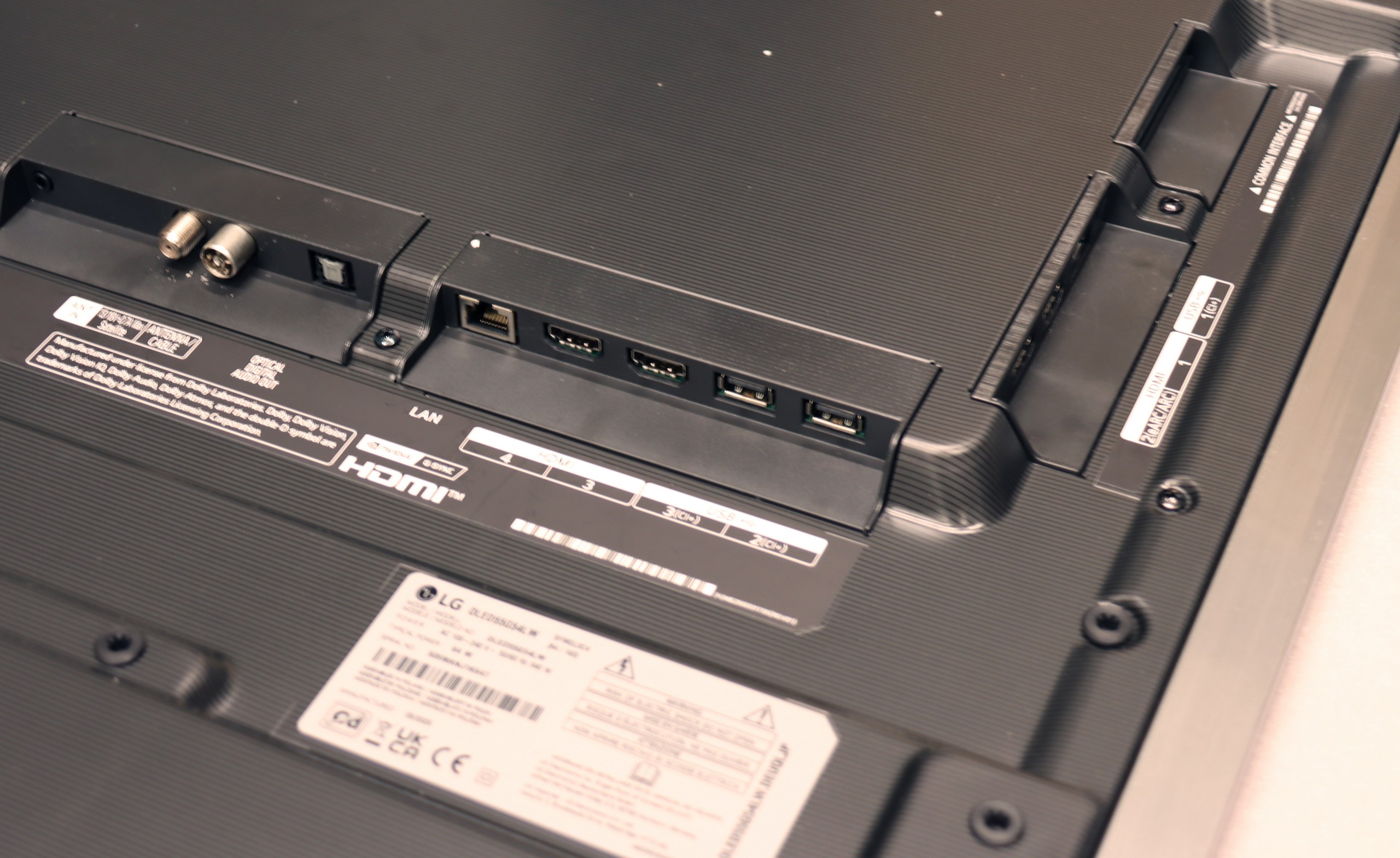
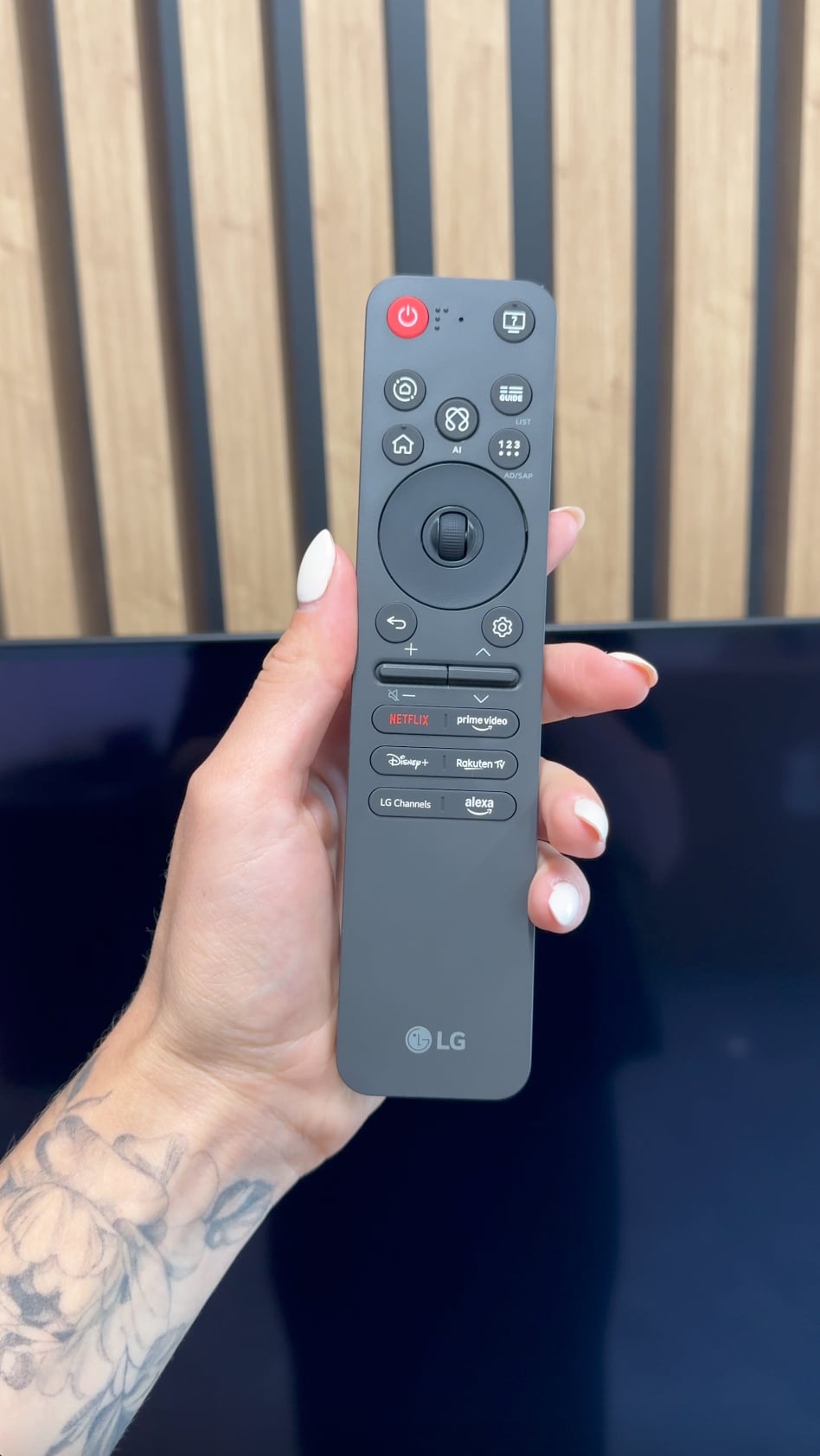
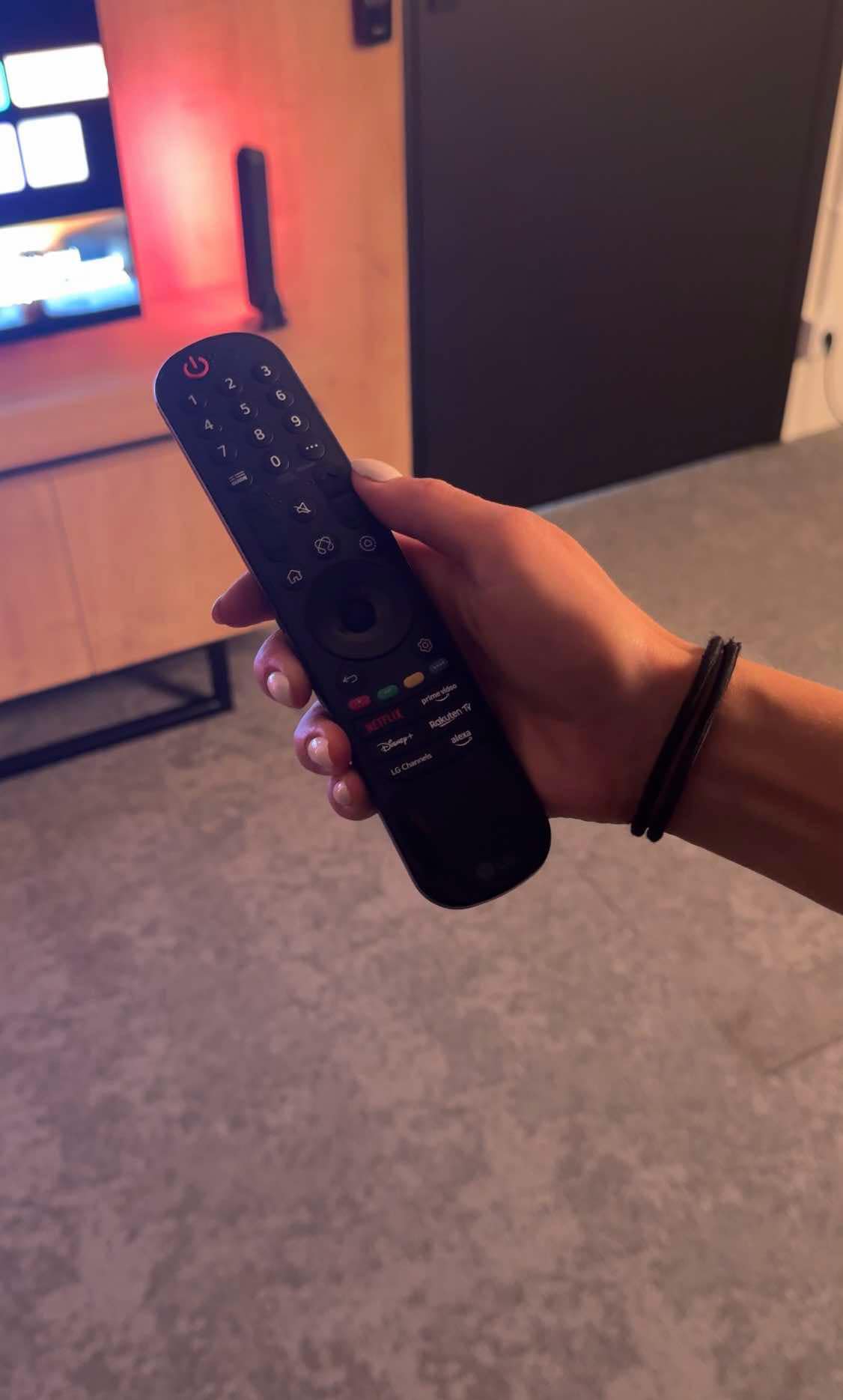
Before we dive into the software that controls the television, it's impossible not to mention the biggest standout feature of the manufacturer's TVs. We're talking, of course, about the multicoloured Ambilight backlighting, which is placed on the back of the device and displays colours that adapt to what's happening on the screen, often allowing for an even greater immersion experience. The operating system responsible for the TV's functioning is Philips' proprietary system, charmingly named TitanOs. It is definitely more closed off and limited in terms of application resources compared to other TVs from the manufacturer that use GoogleTV. Besides the lack of essential applications, its closed nature also reveals itself in another way. We won't be able to perform such basic tasks as programming recordings or recording to USB. People using Apple devices may also feel disappointed by the lack of the AirPlay function, which allows for easy screen streaming. Fortunately, there is the option to connect a keyboard and mouse for more efficient navigation through the TV's menu. It's also worth mentioning that while the remote pairs via BT, it only works for voice selection in English. The rest operates via IR...
In summary: TitanOs has quite a few "buts," especially for those of us who are aware users needing and using multiple streaming platforms. It's more of an option for those limiting themselves to the so-called holy trinity: Netflix, YouTube, and CDA.
Classic Features
LG G5 has a lot to offer when it comes to classic television features. Apart from the lack of the ability to watch two sources (PIP), the TV performs excellently for everyday use. There are no issues with connecting external Bluetooth devices like headphones, and the EPG interface is very clear and understandable – even for those who are not particularly tech-savvy.
Smart TV Features
The Smart TV in the G5 operates on the WebOS system – it is the heart and brain of the entire television. With the Magic remote, using the G5 is truly enjoyable. We control the cursor on the screen with wrist movements, which resembles using a mouse in the air. The system itself is very sophisticated and offers everything one could expect: AirPlay, screen mirroring, voice search, and voice commands – all of which work smoothly and without delays. There’s no doubt it’s one of the best operating systems in TVs on the market.
Note:
During our tests, we had almost nothing to complain about – maybe aside from one exception: the confusion surrounding the remote. Depending on the market and the specific version of the model, you may encounter the new, minimalist Magic remote (without a numeric keypad), or the older version with a full set of buttons. We tested the G54LW model, which had the new Magic remote, but it’s hard to say how the situation looks in other variants. It may be a similar situation to the LG C5 series, where the remote attachment also depends on the specific market.
Playing files from USB
8.2/10
9/10
Supported photo formats:
Maximum photo resolution:

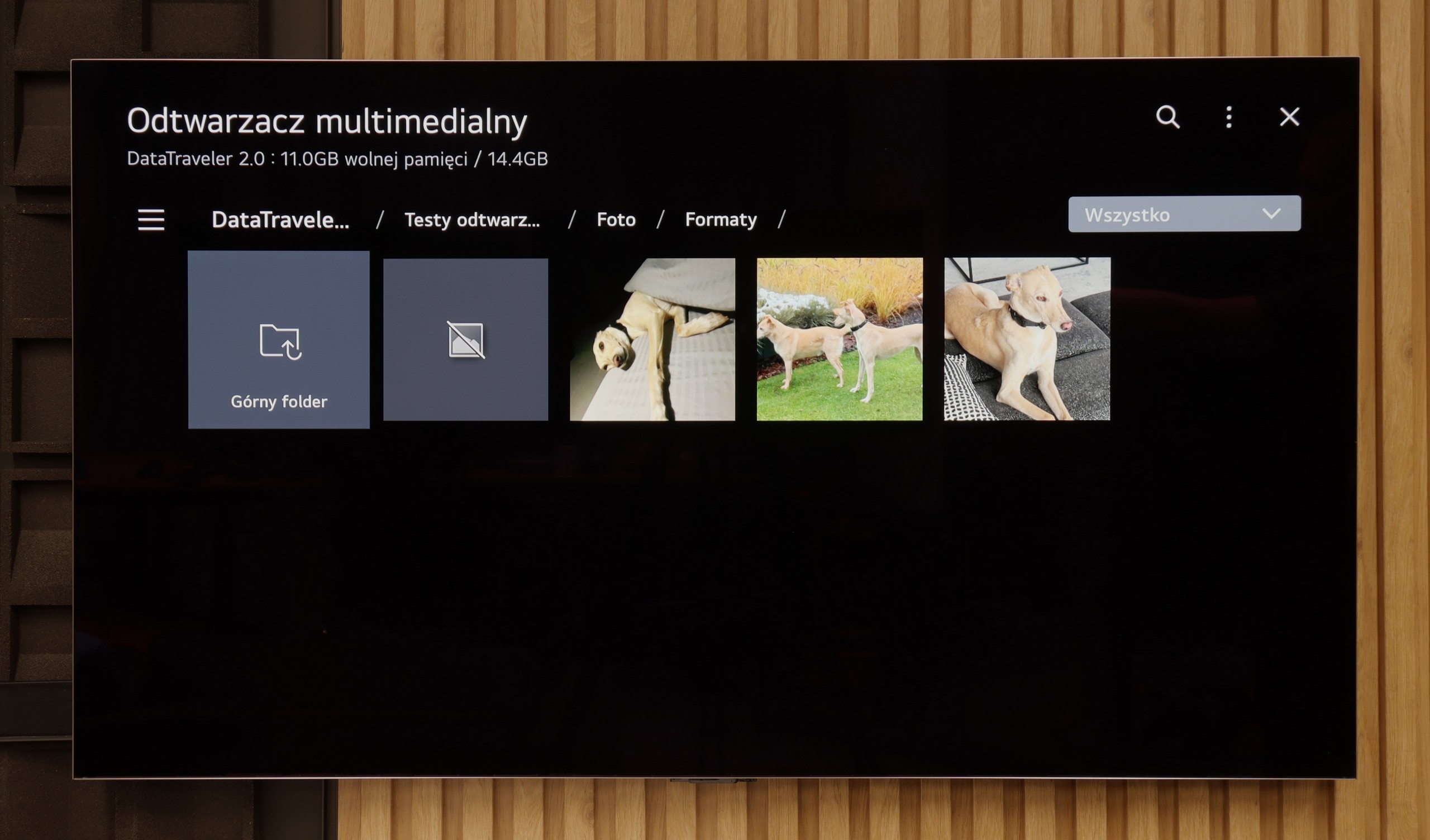
The default media player built into Philips PML9009 offers quite a wide range of capabilities but also has its limitations. It plays virtually all video formats except for .asf, which is not commonly encountered. However, there are issues with the lack of support for the H.265 HEVC codec at high bitrates and .sub files, which are quite popular. When it comes to photos, the player performs adequately, but it lacks support for some popular resolutions and formats, such as HEIC, which is used on Apple devices. The player handles audio the best, where it has no complaints. Unfortunately, due to system limitations, there is no possibility of function expansion, meaning we are left with what the manufacturer has prepared.
The built-in media player in the LG G5 is really quite good. It supports virtually everything you can expect from a modern television – most popular formats work without any issues, and the app's performance is fast. Our only disappointment was the lack of support for very high-bitrate HEVC files at 85 Mbit/s – similar to the C5 and B5 models. Interestingly, the same file played flawlessly on last year's LG OLEDs, so it's hard to say what has caused this change. Nevertheless, in everyday use, the G5 will handle the vast majority of materials, and there will be no need to connect any external devices for media playback.
Apps
6.2/10
8.7/10














































Sound
6.7/10
8.7/10
- Maximum volume--
- Dolby Digital Plus 7.1
- Dolby True HD 7.1
- Dolby Atmos in Dolby Digital Plus (JOC)
- Dolby Atmos in Dolby True HD
- DTS:X in DTS-HD MA
- DTS-HD Master Audio
To begin with, it is worth noting that sound quality is a subjective matter. The built-in audio system in Philips PML9009 stands out with clear high tones, but the bass is quite flat and significantly worse than in competing models in the same price range.
The sound on the LG G5, considering its slim design, is truly phenomenal. When listening to music, you can sense a light, pleasant bass, and in films, the dialogue is clear and easy to hear – it doesn’t get lost even in dynamic scenes. Unfortunately, a bit of a disappointment is the lack of support for the DTS format, which LG used in its older models. It's a shame, as many home theatre enthusiasts might see this as a step backwards.


